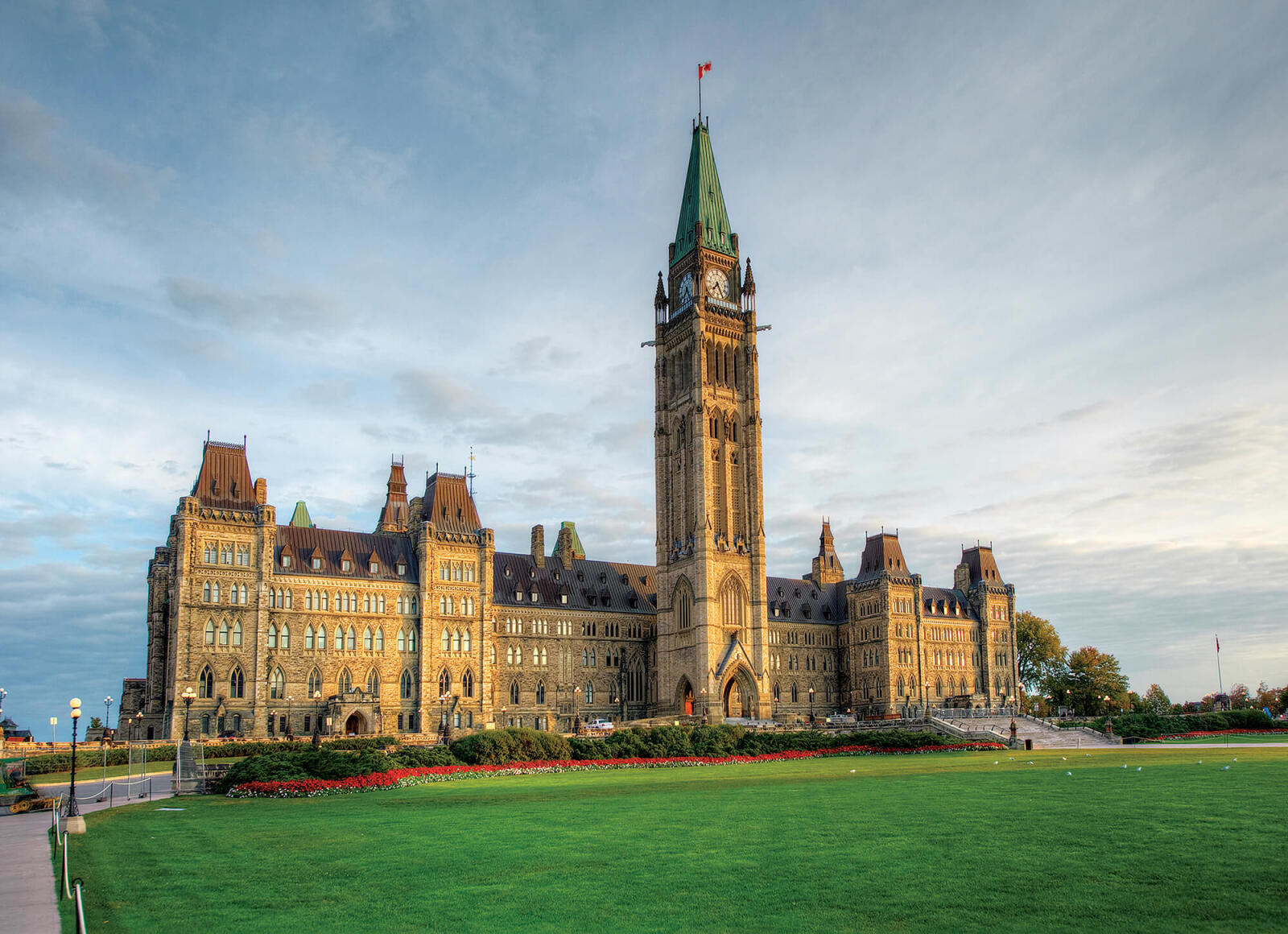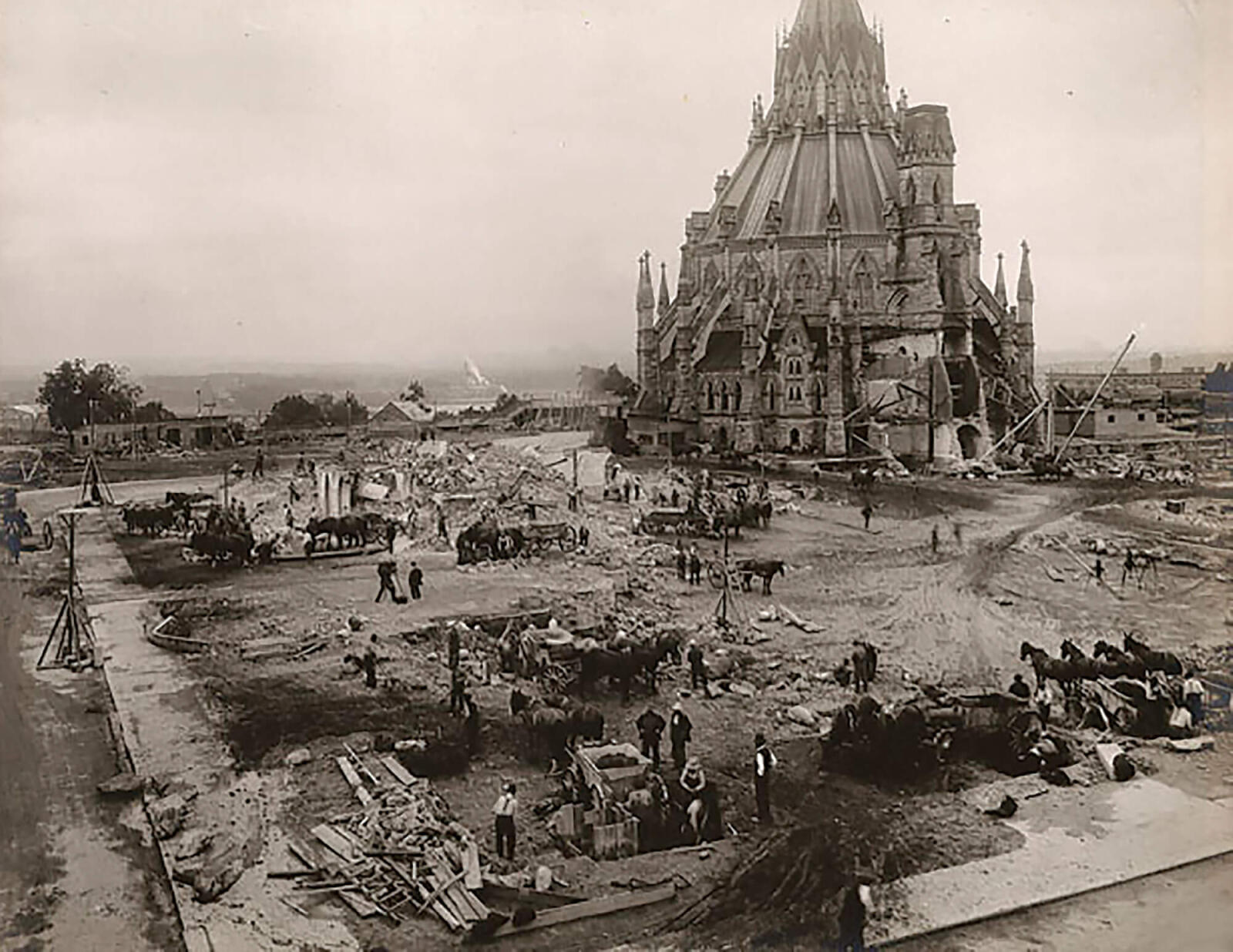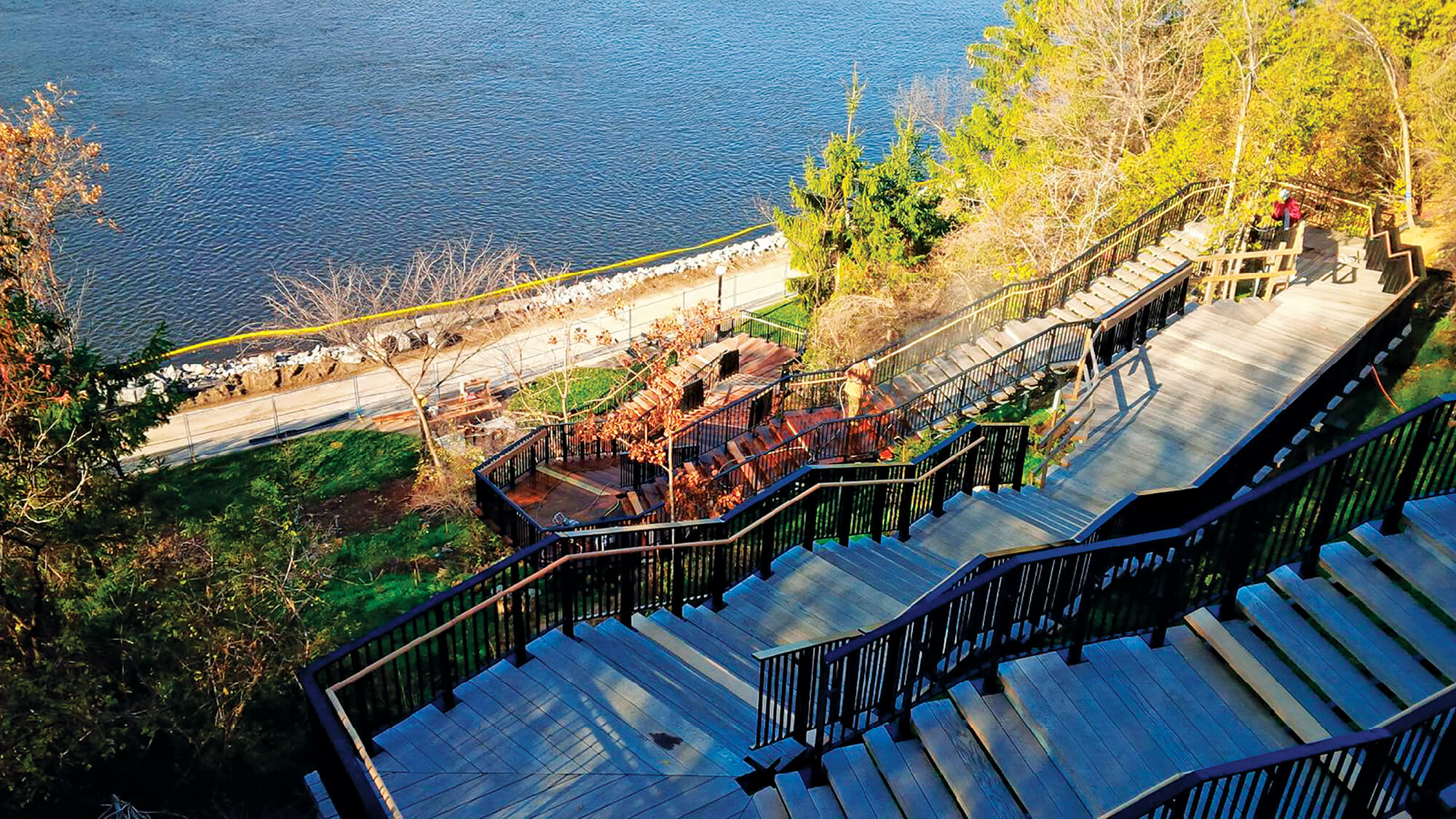July 28, 2017

Panorama Parliament Hill
BY BRIAN BURTONThe story of Canada’s best-known public landscape
The same week Queen Victoria chose Bytown as Canada’s capital in 1858, landscaping contractors began removing Colonel John By’s Barracks Hill construction offices. By had used part of the 24-acre outcrop, now called Parliament Hill, as headquarters for his military engineers, who built the historic Rideau Canal.
After surveying the site, the government quickly began constructing buildings intended to house Canada’s new parliamentary government.
The Queen’s choice was controversial because Ottawa, as we know it today, was an “outback lumber town” with a population of just 7,800 — larger cities like Toronto and Montreal were thought to be better choices. The parcel of land, originally purchased for $3,750, was not impressive and often referred to as a “beaver swamp” by local residents.
Today however, the site is Canada’s best-known landscape, visited by over 3-million people every year. It is also focus of the largest remediation project in Canadian history, currently underway and expected to last 10 years; landscaping upgrades are an essential part of the project.
Hardscaping on the Hill
Landscaping and hardscaping on the Hill included the cobblestone pathways, retaining walls and stone monuments leading from the stone and wrought iron gateways that have always been prominent elements. Part of the Parliament Hill footprint are natural stone setts, quarried from Nepean, Ont., and transported six tons at a time using horse-drawn vehicles. The grounds also feature the Centennial Flame, the provincial and territorial flags and a monument displaying the original Victoria Tower bell that survived the disastrous Centre Block fire of 1916. There are 19 bronze statues of former prime ministers, Fathers of Confederation and two monarchs on the site, which is located atop a 150-ft. cliff overlooking the Ottawa River.Elevations vary greatly over the acreage, presenting a design challenge for landscape architect Calvert Vaux, known for his work on New York City’s Central Park. Vaux utilized the natural site features to best advantage, and part of the site’s appeal derives from the imagination he used to accommodate these elevations.
More recently, the ongoing remediation of the site is using landscape elements to highlight various Parliament Hill improvements. Part of this high-profile project will accommodate the temporary home for the House of Commons, viewers’ gallery and media facilities in the West Block. When completed, the House of Commons and other facilities will be moved to the nearby Centre Block.
 Landscaping and site work for the original Parliament Hill site was very well documented; the government appointed an official photographer to assist the Clerk of the Works. All of the mechanical equipment used on-site was steam powered, and a great deal of the earthmoving and grading was accomplished by horse-drawn work carts.
Landscaping and site work for the original Parliament Hill site was very well documented; the government appointed an official photographer to assist the Clerk of the Works. All of the mechanical equipment used on-site was steam powered, and a great deal of the earthmoving and grading was accomplished by horse-drawn work carts.
Landscaping themes
Vaux’s style and use of horticultural elements were based in large part on our unique climate. By incorporating wood, concrete, metal, glass and non-traditional materials, he created designs with distinct contrasts in scale and texture.Vaux used horticultural elements, plantings and textures to create focal points and patterns. Nearly all elements of the landscape were custom-built on-site, without the use of any manufactured products.
His design for the site created an impression of great space, freedom and continuity, which appears in many of his other projects, especially Central Park. In areas where the views are quite spectacular, he specified attractive paved terrace installations using natural stone, with ample site furnishings, along with the railings and fencing. At various points visitors are able to view the historic Rideau Canal, the Ottawa River and of course, the Peace Tower and Eternal Flame.
Vaux created an impression of space and freedom that is uniquely Canadian; he combined natural features including water, vegetation and open space that contrasts with other areas that are manicured. This contrasts with the steep cliff areas, deliberately left as they were found over 150 years ago.
While the grounds have undergone many changes over the years, most of its basic and recognizable elements have remained the same:
- Large areas of public space surrounded by well executed gardens, flowerbeds and natural horticultural features.
- Numerous well-lit pathways, along with many hardscaping features such as pavements and retaining walls, as well as signage and site furnishings.
- Mature and well-groomed trees, gardens and shrubs, complemented by excellent examples of natural stone fencing with wrought iron detailing.
Challenge of maintenance
An important consideration regarding Parliament Hill is the level of effort required to maintain a public site of its size. Parliament Hill typically hosts over 250,000 visitors per month, even in winter. The site also serves double duty as a working environment for thousands of employees as well as many elected and appointed members of the government.The grounds host many educational, ceremonial and special events as well. Although the site is not a public park in the usual sense of the word, it serves many similar functions. Its usage, over the past two decades in particular, is a great deal higher than even our most popular Federal or Provincial parks. In addition, the usage is virtually continuous, meaning the time available for routine maintenance and upkeep is compressed.
 While elevation is essential to the site’s character, it presents constant maintenance challenges.
While elevation is essential to the site’s character, it presents constant maintenance challenges.As a result, logistics and scheduling of essential maintenance services continues to be a challenge for landscape contractors on the well-known site.
According to Ian Rowbotham of Exel Contracting in Ottawa, all landscape work on Parliament Hill, whether it be new construction, remediation or maintenance, needs to accommodate the primary needs of government and administration. This can include official business functions, visits from local or foreign dignitaries and other uses for the Parliament Hill site.
Because the site is open to the public around the clock, proper safety procedures are also important, and contractors on-site need to be diligent.
Birthday party this July
The pathways and park benches on Parliament Hill will likely be full on Canada Day this July 1, especially since Canada’s 150th birthday falls on a Saturday.The site is expected to accommodate crowds of over 400,000, and scheduled events include a Changing of the Guard ceremony early in the day, followed by a Snowbirds flyover at noon.
After that, it’s back to work for more than 500 workers employed on the on-going Parliament Hill remediation.
Brian Burton is an Ottawa-based construction writer.